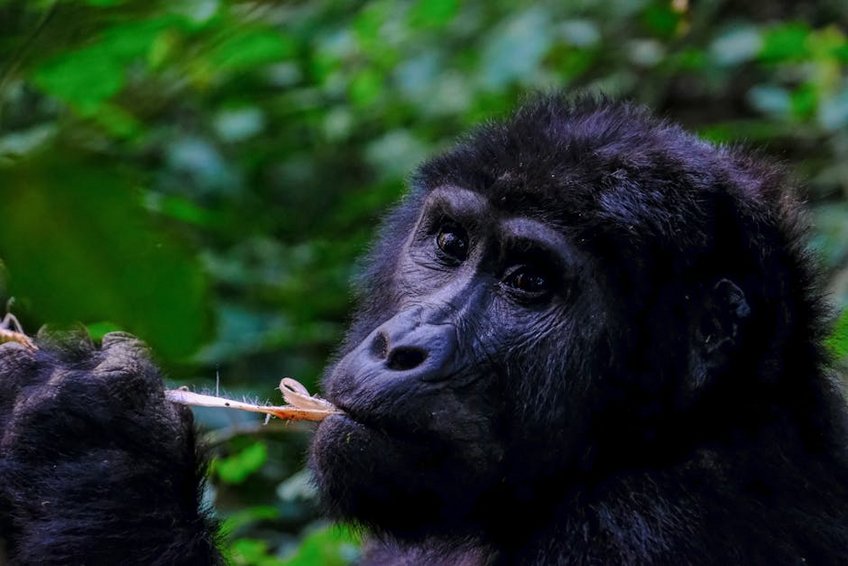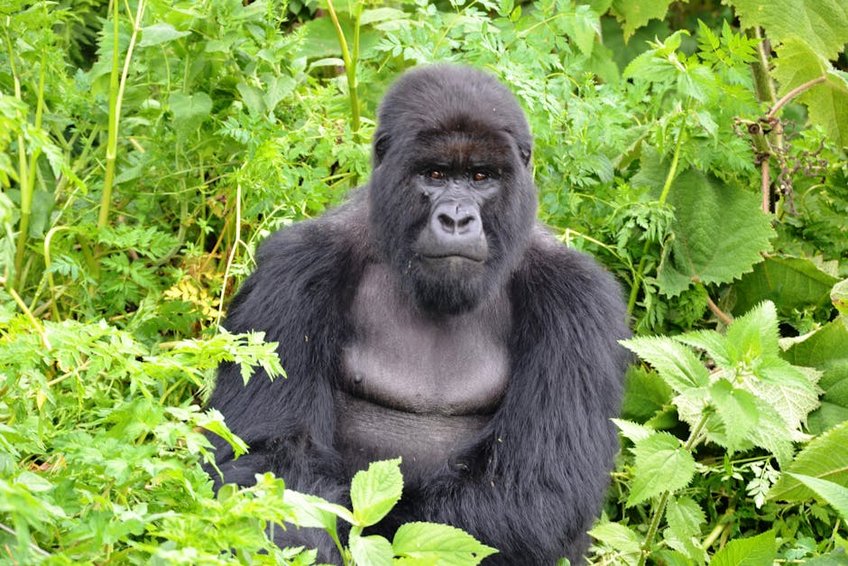Democratic Republic Congo Virunga Mountain Gorillas: A Primate Encounter of a Lifetime
Encountering Democratic Republic Congo Virunga mountain gorillas represents one of Africa’s most profound wildlife experiences within an active volcanic landscape. Virunga National Park protects approximately one-third of the world’s remaining mountain gorilla population across its lush forests and misty peaks. This guide details essential planning strategies, conservation-focused tourism practices, and practical logistics for your Central African adventure.
Essential Virunga National Park Information
Virunga National Park encompasses 7,800 square kilometers in eastern Democratic Republic of Congo bordering Rwanda and Uganda. Established in 1925, Africa’s oldest national park shelters 218 mammal species alongside critically endangered mountain gorillas. The park’s diverse ecosystems range from glacier-capped volcanoes to savannah plains and tropical rainforests.
Political instability occasionally affects certain park regions though gorilla trekking areas maintain consistent security protocols. Visitors must follow designated routes with armed rangers while respecting strict conservation guidelines during gorilla encounters. Tourism revenue directly funds anti-poaching patrols and community development projects throughout the surrounding areas.
Understanding Mountain Gorilla Conservation
Mountain gorillas survive in only two Central African locations with Virunga’s population showing steady growth through intensive protection.
- Virunga’s gorilla monitoring teams track eight habituated families available for tourist visits while protecting non-habituated groups from human interaction.
- Conservation efforts reduced mountain gorilla poaching by 90% since 1990 through daily ranger patrols and veterinary care programs for injured animals.
- Tourism permits costing $400 directly fund these protection initiatives while creating economic alternatives for former poachers through employment opportunities.
- Budget travelers spend $1,500-$2,000 for 3-day trips including $400 permits, $50 nightly hostels, local meals, and shared border transfers from Rwanda.
- Mid-range visitors allocate $2,500-$3,500 for 5-day itineraries featuring $400 permits, $200 nightly lodges, guided Nyiragongo volcano hikes, and private 4×4 transportation.
- Luxury experiences cost $4,000-$6,000 for 7-day packages with $400 permits, $500 premium lodges, chimpanzee habituation experiences, and dedicated guides throughout.
- Virunga National Park Official Website
- World Wildlife Fund Virunga Conservation
Geographic and Climate Overview
Virunga’s volcanic mountains create microclimates varying dramatically between 800-meter and 4,507-meter elevations. Daytime temperatures range from 60-80°F (16-27°C) in gorilla habitats with cooler conditions at higher volcanic elevations. The park experiences two dry seasons from December-February and June-September offering optimal trekking conditions.
Rainfall patterns differ significantly between the southern sector’s tropical climate and northern savannah regions. Gorilla trekking occurs year-round though muddy trails during April-May and October-November rainy seasons require additional physical effort. Early morning mists frequently envelop the bamboo forests creating atmospheric photography opportunities.
Park Accessibility and Regions
Most visitors access Virunga through the Rwandan border crossing at Goma with transfers to Mikeno Lodge headquarters. The southern sector around Bukima and Kibati offers primary gorilla trekking experiences while the northern sector features Nyiragongo volcano hikes. Eastern sections remain inaccessible due to ongoing security concerns requiring careful itinerary planning.

Alt: “virunga-national-park-mountain-gorillas-forest-habitat”
Planning Your Democratic Republic Congo Virunga Mountain Gorillas Trip
Organizing your Democratic Republic Congo Virunga mountain gorillas adventure requires attention to permit availability, health precautions, and regional logistics. Secure gorilla permits 6-9 months in advance through Virunga’s official booking platform during December-February peak season. All visitors need valid yellow fever vaccination certificates alongside comprehensive travel insurance covering emergency evacuation.
Physical preparation proves essential for trekking through steep, muddy terrain at 2,000-4,000-meter altitudes where oxygen levels decrease noticeably. Pack waterproof hiking boots, gaiters, gardening gloves for vegetation protection, and multiple clothing layers for changing conditions. Consider spending 2-3 nights acclimatizing in Kigali or Goma before attempting strenuous gorilla treks.
Best Time to Visit Virunga
Visit Virunga between June-September for optimal gorilla viewing conditions with minimal rainfall and clearer volcanic visibility. Daytime temperatures average 68°F (20°C) during these months with night temperatures dropping to 50°F (10°C) at higher elevations. December-February offers similar dry conditions though increased tourist numbers require earlier permit reservations.
Shoulder seasons in March and October provide good trekking conditions with 30% lower permit availability pressure. April-May heavy rains create challenging trail conditions though photographer’s enjoy vibrant green landscapes with fewer visitors. Avoid November due to peak rainfall exceeding 200mm monthly making trails exceptionally difficult.
Budget Planning and Costs
Budget strategically for this premium wildlife experience where permits constitute the largest expense.
Essential Preparation Checklist
Obtain your Congo tourist visa through Virunga’s online platform 2-3 months before travel alongside multiple passport copies. Pack waterproof gear, high-energy snacks, 2-3 liter water bottles, and broken-in hiking boots with ankle support. Include basic medical supplies like rehydration salts, antiseptic wipes, and altitude sickness medication as precautionary measures.
Book international flights into Kigali International Airport (KGL) with overnight stays before crossing to Goma next morning. Confirm all reservations directly with lodges and tour operators while carrying printed confirmations for border officials. Learn basic French phrases and local greetings to facilitate interactions with rangers and community members.
Top Attractions and Activities
Virunga National Park delivers diverse experiences beyond mountain gorilla encounters across its spectacular landscapes. Nyiragongo volcano’s lava lake provides one of Africa’s most dramatic natural wonders accessible via 4-6 hour guided hikes. The Senkwekwe Center offers unique opportunities to observe orphaned gorillas receiving 24-hour care from dedicated conservation teams.
Nyamuragira volcano’s frequent eruptions create astonishing nighttime spectacles visible from designated viewing areas with proper safety measures. Lake Kivu’s waterfront resorts provide relaxing alternatives to mountain trekking with boat tours and cultural visits to local fishing communities. These complementary activities enrich typical 3-4 day itineraries focusing primarily on primate encounters.
Must-See Gorilla Families
The Kabirizi family represents Virunga’s largest habituated group with 34 members including impressive silverback leaders. Visitors typically locate this family within 2-3 hours of trekking through medium-difficulty terrain near the Bukima patrol post. Their tolerance for human presence creates excellent photographic opportunities during the permitted one-hour viewing period.
The Humba family’s 17 members inhabit higher elevation forests requiring more strenuous 3-4 hour hikes through beautiful bamboo zones. This group’s remote location rewards trekkers with intimate encounters away from other tourist groups. Rangers recommend good physical conditioning for accessing their territory at 2,800-meter altitudes.
The Munyaga family’s 12 members occupy easily accessible slopes ideal for visitors with mobility concerns or limited trekking experience. Located just 45-90 minutes from starting points, this group provides wonderful introduction to gorilla behavior observation. Their playful juveniles frequently approach within 5-7 meters under ranger supervision.
Hidden Gems and Local Favorites
Tongo chimpanzee habituation experiences occur in forested areas rarely visited by mainstream tourism operations. These full-day adventures involve tracking semi-habituated chimpanzee groups with researchers studying their behavioral patterns. Limited to four participants daily, this exclusive activity costs $100 including expert guidance and lunch provisions.
Mount Hoyo’s underground river system features spectacular caves and waterfalls accessible via guided hikes from nearby communities. Local guides share traditional knowledge about medicinal plants and forest conservation practices during 3-4 hour explorations. This activity supports directly community tourism initiatives beyond standard park excursions.
Nyiragongo Volcano Overnight Hike
Summit Nyiragongo volcano for overnight stays at 3,470 meters overlooking the world’s largest lava lake. The strenuous 4-6 hour ascent passes through four distinct vegetation zones with increasingly dramatic views. Basic mountain shelters provide sleeping accommodation though temperatures drop to 35°F (2°C) requiring warm layers and proper equipment.
Descend next morning after witnessing the lava lake’s nocturnal spectacle where molten rock bubbles and cascades violently. This challenging adventure requires excellent physical condition and acclimatization to high altitude conditions. Combine with gorilla trekking for comprehensive Virunga experience over 5-7 day itineraries.
Practical Travel Information
International visitors typically fly into Kigali, Rwanda before transferring 3-4 hours to Goma, DRC border crossing. Virunga’s tourism office facilitates border formalities though independent travelers must obtain visas beforehand. Within the park, 4×4 vehicles transport visitors between attractions while armed rangers accompany all activities for security.
Accommodation ranges from basic hostel rooms to luxury lodges with Mikeno Lodge offering premier facilities near gorilla trekking headquarters. All visitors receive comprehensive safety briefings regarding current conditions and restricted areas before commencing activities. Emergency communication systems and medical evacuation plans operate throughout tourist zones.
| Accommodation Type | Features and Location | Price Range (USD) |
|---|---|---|
| Budget Hostels | Basic rooms, shared bathrooms, community meals, Goma location | $40-60 nightly |
| Mid-Range Lodges | Private bathrooms, hot water, restaurant, park entrance locations | $150-250 nightly |
| Premium Lodges | Luxury amenities, swimming pools, spa services, guided activities included | $400-600 nightly |
| Volcano Shelters | Basic dormitory, sleeping bags required, Nyiragongo summit location | $100 overnight |


